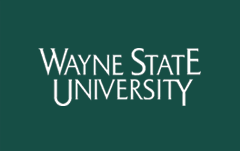Off-campus WSU users: To download campus access dissertations, please use the following link to log into our proxy server with your WSU access ID and password, then click the "Off-campus Download" button below.
Non-WSU users: Please talk to your librarian about requesting this dissertation through interlibrary loan.
Access Type
WSU Access
Date of Award
January 2024
Degree Type
Dissertation
Degree Name
Ph.D.
Department
Chemistry
First Advisor
Hien Nguyen
Abstract
Asymmetric transformations of Morita-Baylis-Hillman (MBH) adducts have proven useful in the construction of frameworks of various classes of biologically active compounds which have such as amino acids, lactams, peptides, carbocycles, cinnamic acids, alkaloids, and other natural products. The polyfunctionality of MBH compounds renders them attractive synthetic blocks in organic chemistry. In this dissertation, the versatility of MBH adducts was exploited for the synthesis of different classes of chiral synthetic motifs. While there are many methods for the asymmetric synthesis of monosubstituted allylic fluorides, construction of enantioenriched 1,2-disubstituted allylic fluorides has not been reported. To address this gap, an enantioselective synthesis of 1,2-disubstituted allylic fluorides using chiral diene-ligated rhodium catalyst, Et3N•3HF as a source of fluoride, and Morita Baylis Hillman (MBH) trichloroacetimidates is reported herein. Kinetic studies show that one enantiomer of racemic MBH substrate reacts faster than the other. Computational studies reveal that both syn and anti -allyl complexes are formed upon ionization of allylic substrate, and the syn complexes are slightly energetically favorable. This is in contrast to our previous observation for formation of monosubstituted -allyl intermediates, in which the syn -allyl conformation is strongly preferred. In addition, the presence of an electron-withdrawing group at C2 position of racemic MBH substrate renders 1,2-disubstituted -allyl intermediate formation endergonic and reversible. To compare, formation of monosubstituted -allyl intermediates was exergonic and irreversible. DFT calculations and kinetic studies support a dynamic kinetic asymmetric transformation process wherein the rate of isomerization of the 1,2-disubstituted pi-allylrhodium complexes is faster than that of fluoride addition onto the more reactive intermediate. Also, chiral b-amino nitriles represent a fundamentally important class of versatile synthetic intermediates. They are also ubiquitous motifs in natural products, pharmaceuticals, and fine chemicals, however there are limitations in the asymmetric aminocyanation protocols reported for the synthesis of aminonitriles. A two-step approach starting from MBH trichloroacetimidates was envisioned as alternative access to chiral aminonitriles. Herein, the construction of functionalized -amino nitriles containing two adjacent stereocenters, in a congruent manner and with very high diastereocontrol has been completed. This strategy provides direct access to functionalized -tertiary amino nitrile products through an amination-arylation sequence involving readily available starting materials. This protocol displays exceptionally robust scope for various MBH Michael acceptors and cyclic secondary amines. In summary, this work has shown that MBH trichloroacetimidates are powerful synthetic intermediates that can provide access to otherwise challenging classes of valuable organic motifs via asymmetric transformations.
Recommended Citation
Usman, Fuad Oluwaseyi, "Rhodium-Catalyzed Asymmetric Transformations Of Morita-Baylis-Hillman Trichloroacetimidates" (2024). Wayne State University Dissertations. 4008.
https://digitalcommons.wayne.edu/oa_dissertations/4008
